A growing number of consumers are switching from traditional dairy milk to plant-based substitutes. Perceived health benefits are part of the motivation for this change. But are dairy-free alternatives actually better for you than traditional milk?
In the past, ethical factors such as animal welfare or environmental issues were the key drivers identified by those who chose a plant-based diet. However, recent Bord Bia research revealed that 19% of Irish people claim to be following a diet that has a greater emphasis on plants to improve their health.
In the last decade, consumption of alternative milks has increased to approximately 5-7% of total milk consumption.
Although this is a relatively low level of consumption, the rate of increase has been quite high over the last decade.
According to Euromonitor, the volume more than doubled between the years of 2009 to 2015, with Nielsen data predicting an annual growth rate of 8-12% over the next four years.
There is also a clear gender bias in usage, with women more likely to use dairy alternatives, particularly almond and soya drinks, than men.
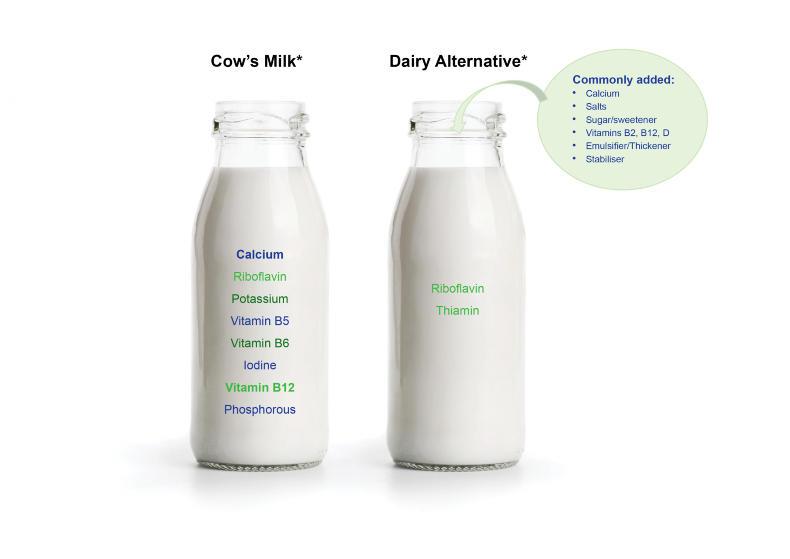
Micronutrients naturally present are based on plain cow’s milk and plain soya alternative (unsweetened, unfortified). A nutrient’s presence is based on its concentration reaching a source under the criteria set out in the EU Register of Nutrition and Health Claims made on food.
Total dairy milk sold for human consumption in 2011 was 492m litres (108 litres per person) and 533m in 2019 (109 litres per person). This corroborates analysis of Alpro’s growth in Europe that shows that there isn’t a cannibalisation of dairy sales but that consumption is in fact increasing, ie people are consuming both dairy and plant-based products.
What are we drinking?
Data for the Irish market is scant as the volume of alternatives is tiny at 0.2% of the liquid milk market.
Mintel research published in January of this year shows that Irish consumers continue to show a strong preference for chilled standard cow’s milk but of the alternatives, almond milk is the preference.
The Mintel data shows that 26% of consumers in the Republic of Ireland have consumed this type of alternative in the past three months.
In the US, almond milk commands 64% of the market share.
What’s the difference?
With demand will come more market players and with more market players, there will be a bigger scramble for shelf space. Marketing will intensify and companies will add additional claims to differentiate their products.
Mintel research published in January of this year shows that Irish consumers continue to show a strong preference for chilled standard cow’s milk but of the alternatives, almond milk is the preference
Retailers have responded to demand by offering a wider selection of options. These options sit on the shelf, side by side with dairy milks.
Consumers, therefore, may believe that these products are nutritionally equivalent or considering the massive price differential that the more expensive plant-based option is actually nutritionally superior.
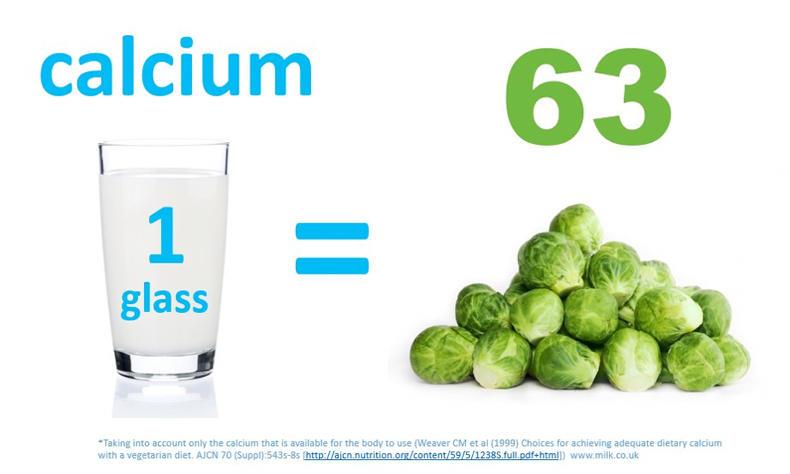
250ml milk has the same calcium as 63 Brussels sprouts or 900g spinach.
In her review of dairy alternatives, Dr Marianne Walsh, NDC nutrition manager, outlines the compositional difference:
Fresh cow’s milk is a natural dairy product, composed of the single ingredient, milk. Milk is pasteurised for food-safety purposes but no colours, preservatives, sweeteners or other ingredients are added, with the exception of the nutrients that are added to fortified milks (such as vitamin D). Plant-based dairy alternatives are produced by the blending and extraction of plant products such as soya, nuts or grains in water. The plant ingredient generally ranging from 2.3% to 12%. To improve shelf-life, taste, texture and the suspension of these plant particles in the water solution, additives such as oils, stabilisers, emulsifiers, flavourings, sweeteners and salt are commonly added.Although labelling is regulated, a direct comparison between a regular pint of cow’s milk and the “fortified with” labels is very difficult for the average consumer. To add to the complexity, alternative “mylks” include a variety of nut (almond, coconut, cashew, pistachio, hazelnut, etc), legume-based (soya or pea), seed-based (hemp and flax) and cereal-based options (rice or oat).
And let’s be honest, there are many mixed messages from both the media and food processing companies designed to shape our beliefs on the nutritional elements of these products.
What does the European Commission say?
The EU regulations in this area (No 1308/2013) defines “milk” as meaning “exclusively the normal mammary secretion obtained from one or more milking’s without either addition thereto or extraction therefrom.” To even the most unindoctrinated, mammary secretion would suggest that milk comes from a dairy-producing animal – and not a tree or plant.
What do the Irish authorities say?
Government advice which can be accessed at gov.ie is to follow the published food pyramid from the age of five plus. For an adult to reach the recommended intake in the “milk, yoghurt, cheese” category of the food pyramid – they must choose three servings per day and five if aged between nine and 18 years. See below for serving sizes.
For younger children, the Food Safety Authority of Ireland (FSAI) recently published a report outlining food-based dietary guideline recommendations for children from one to five years of age.
Parents and guardians are warned against using some beverages such as almond, coconut and/or rice beverages as milk substitutes as these are “nutritionally inadequate”.
The report states that if a plant-based beverage is required to replace cow’s milk, a soya alternative can be used, provided it is fortified with nutrients, particularly calcium.
Speaking with Professor Mary Flynn, a member of the committee who authored the report, the advice was clear: “The way cow’s milk is set up, calcium is in a form that is more easily absorbed. If there is a child that can’t take milk, a dietitian needs to be involved as it (the diet) will not be sufficient. It is the most important food in the diet.”
She made two points. First, that breast milk is nutritionally superior to all other milks, formulas and foods for human infants. Secondly, that 500ml of milk is an excellent source of calcium but that the Irish “need a supplement Halloween to St Patrick’s Day for vitamin D”.
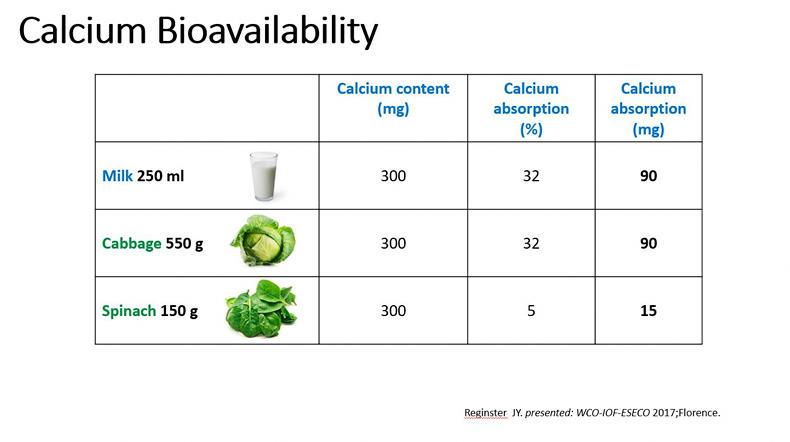
250 ml milk has the same calcium as 63 Brussels sprouts or 900g spinach
Which is better?
Compared to the alternative milk products, cow’s milk is the most well-balanced source of key nutrients like proteins, fats and carbohydrates. Milk is a rich source of calcium and contains high levels of B vitamins. It is also a complete protein, meaning it contains all nine essential amino acids.
And while many milk alternatives have some of the beneficial aspects of traditional dairy, they also lack in areas where milk exceeds, while many also have sugar added to the product.
Should you decide to drink a non-dairy "mylk" because you like the taste of it or are lactose-intolerant and don’t want to drink the lactose-free dairy milk available, there is no problem with it. However, if you are making this decision as you believe that non-dairy milks are a healthier choice, this is not true. Milk is the best choice to meet the requirements of a human diet.
Plant-based products are more expensive than their dairy equivalents. And yet are cheaper to produce with a lower cost base. Alternative milks retail for approximately €2.50/litre in comparison 75c/litre for dairy milk. A jug of almond milk contains roughly 39 (US) cents worth of almonds, plus the filtered water and additives and it retails for $3.99+ in the US. Add in cost of importation, etc, and at €2.39/litre there is still a nice margin when it retails in Ireland.
Barclays research states that plant based yoghurts are priced at a 20-25% premium in the UK despite the cost base being 30% cheaper.
The implication (or result) being that plant based yoghurts are very good for a company’s growth and gross margin.
It makes sense to put your marketing budget behind the product driving the greatest profit and therefore we can safely assume that the battle for shelf space and the associated marketing claims will continue.
Is the consumer
being misled?
If you ask yourself why you think an alternative is healthier, you may struggle to put your finger on it. Much of the commentary relating to plant based alternatives being healthier is media driven, through documentaries designed to scare people into change and through social media and bloggers who target a younger more impressionable audience.
Take refrigeration as an example. Fresh milk is pasteurised and requires refrigeration. Most plant based alternatives are UHT (ultra-high temperature sterilised) which means that they have a long shelf life (can be up to six months) and only require refrigeration once opened. However they are found alongside dairy milk in the chilled aisle. This gives the impression that they are fresh and natural. Claims continue to play a role according to Mintel:
The high protein claim continues to grow in Europe in the plant-based drinks, yoghurt and ice cream category, featuring in 10% of new product development in the 12 months to March 2020.Organic claims are flourishing in Europe: in the year to March 2020, as many as 42% of European plant-based drink, yoghurt and ice cream launches featured an organic claim.What’s in a name?:
The legislation
Although you are not actually allowed to call alternative options “milks”, most do. Back in 2017, the EU Court of Justice clarified that within the EU, a number of dairy terms must only be used on products that come from an animal. “Milk” is the most obvious one, but the court also reaffirmed this status for words like “cream,” “butter,” “cheese” and “yoghurt,” all of which are protected under EU law. Attempting to modify these terms by adding a descriptor also isn’t allowed – meaning things like “veggie cheese” or “plant milk” doesn’t float either.
What is a serving?
Serving sizes often cause confusion. A food that is an important contributor of nutrients to the diet but consumed in excess can have a negative impact. According to the food pyramid, one serving of milk/yoghurt/cheese is:
1 glass (200ml) milk.1 carton (125g) yoghurt.1 bottle (200ml) yoghurt drink.2 thumbs (25g) hard or semi-hard cheese such as cheddar or edam.2 thumbs (25g) soft cheese such as brie or camembert.Other sources of calcium
There are other foods that contain calcium including (source HSE.ie):
green leafy vegetables, such as broccoli, cabbage and okra, but not spinach.soya beanstofu.soya drinks with added calcium.nuts.bread and anything made with fortified flour.fish where you eat the bones, such as sardines and pilchards.However, it is important to note that although calcium is also found in other foods, these are not equivalent sources to dairy as a greater proportion must be consumed to achieve the recommended intake of calcium.
For example, one glass of milk contains the same calcium as 63 Brussels sprouts. And the after effects of that might lead to a whole new set of problems.
Read more
Early to bed and early to rise – easier said than done
On the beat during COVID-19
A growing number of consumers are switching from traditional dairy milk to plant-based substitutes. Perceived health benefits are part of the motivation for this change. But are dairy-free alternatives actually better for you than traditional milk?
In the past, ethical factors such as animal welfare or environmental issues were the key drivers identified by those who chose a plant-based diet. However, recent Bord Bia research revealed that 19% of Irish people claim to be following a diet that has a greater emphasis on plants to improve their health.
In the last decade, consumption of alternative milks has increased to approximately 5-7% of total milk consumption.
Although this is a relatively low level of consumption, the rate of increase has been quite high over the last decade.
According to Euromonitor, the volume more than doubled between the years of 2009 to 2015, with Nielsen data predicting an annual growth rate of 8-12% over the next four years.
There is also a clear gender bias in usage, with women more likely to use dairy alternatives, particularly almond and soya drinks, than men.

Micronutrients naturally present are based on plain cow’s milk and plain soya alternative (unsweetened, unfortified). A nutrient’s presence is based on its concentration reaching a source under the criteria set out in the EU Register of Nutrition and Health Claims made on food.
Total dairy milk sold for human consumption in 2011 was 492m litres (108 litres per person) and 533m in 2019 (109 litres per person). This corroborates analysis of Alpro’s growth in Europe that shows that there isn’t a cannibalisation of dairy sales but that consumption is in fact increasing, ie people are consuming both dairy and plant-based products.
What are we drinking?
Data for the Irish market is scant as the volume of alternatives is tiny at 0.2% of the liquid milk market.
Mintel research published in January of this year shows that Irish consumers continue to show a strong preference for chilled standard cow’s milk but of the alternatives, almond milk is the preference.
The Mintel data shows that 26% of consumers in the Republic of Ireland have consumed this type of alternative in the past three months.
In the US, almond milk commands 64% of the market share.
What’s the difference?
With demand will come more market players and with more market players, there will be a bigger scramble for shelf space. Marketing will intensify and companies will add additional claims to differentiate their products.
Mintel research published in January of this year shows that Irish consumers continue to show a strong preference for chilled standard cow’s milk but of the alternatives, almond milk is the preference
Retailers have responded to demand by offering a wider selection of options. These options sit on the shelf, side by side with dairy milks.
Consumers, therefore, may believe that these products are nutritionally equivalent or considering the massive price differential that the more expensive plant-based option is actually nutritionally superior.

250ml milk has the same calcium as 63 Brussels sprouts or 900g spinach.
In her review of dairy alternatives, Dr Marianne Walsh, NDC nutrition manager, outlines the compositional difference:
Fresh cow’s milk is a natural dairy product, composed of the single ingredient, milk. Milk is pasteurised for food-safety purposes but no colours, preservatives, sweeteners or other ingredients are added, with the exception of the nutrients that are added to fortified milks (such as vitamin D). Plant-based dairy alternatives are produced by the blending and extraction of plant products such as soya, nuts or grains in water. The plant ingredient generally ranging from 2.3% to 12%. To improve shelf-life, taste, texture and the suspension of these plant particles in the water solution, additives such as oils, stabilisers, emulsifiers, flavourings, sweeteners and salt are commonly added.Although labelling is regulated, a direct comparison between a regular pint of cow’s milk and the “fortified with” labels is very difficult for the average consumer. To add to the complexity, alternative “mylks” include a variety of nut (almond, coconut, cashew, pistachio, hazelnut, etc), legume-based (soya or pea), seed-based (hemp and flax) and cereal-based options (rice or oat).
And let’s be honest, there are many mixed messages from both the media and food processing companies designed to shape our beliefs on the nutritional elements of these products.
What does the European Commission say?
The EU regulations in this area (No 1308/2013) defines “milk” as meaning “exclusively the normal mammary secretion obtained from one or more milking’s without either addition thereto or extraction therefrom.” To even the most unindoctrinated, mammary secretion would suggest that milk comes from a dairy-producing animal – and not a tree or plant.
What do the Irish authorities say?
Government advice which can be accessed at gov.ie is to follow the published food pyramid from the age of five plus. For an adult to reach the recommended intake in the “milk, yoghurt, cheese” category of the food pyramid – they must choose three servings per day and five if aged between nine and 18 years. See below for serving sizes.
For younger children, the Food Safety Authority of Ireland (FSAI) recently published a report outlining food-based dietary guideline recommendations for children from one to five years of age.
Parents and guardians are warned against using some beverages such as almond, coconut and/or rice beverages as milk substitutes as these are “nutritionally inadequate”.
The report states that if a plant-based beverage is required to replace cow’s milk, a soya alternative can be used, provided it is fortified with nutrients, particularly calcium.
Speaking with Professor Mary Flynn, a member of the committee who authored the report, the advice was clear: “The way cow’s milk is set up, calcium is in a form that is more easily absorbed. If there is a child that can’t take milk, a dietitian needs to be involved as it (the diet) will not be sufficient. It is the most important food in the diet.”
She made two points. First, that breast milk is nutritionally superior to all other milks, formulas and foods for human infants. Secondly, that 500ml of milk is an excellent source of calcium but that the Irish “need a supplement Halloween to St Patrick’s Day for vitamin D”.

250 ml milk has the same calcium as 63 Brussels sprouts or 900g spinach
Which is better?
Compared to the alternative milk products, cow’s milk is the most well-balanced source of key nutrients like proteins, fats and carbohydrates. Milk is a rich source of calcium and contains high levels of B vitamins. It is also a complete protein, meaning it contains all nine essential amino acids.
And while many milk alternatives have some of the beneficial aspects of traditional dairy, they also lack in areas where milk exceeds, while many also have sugar added to the product.
Should you decide to drink a non-dairy "mylk" because you like the taste of it or are lactose-intolerant and don’t want to drink the lactose-free dairy milk available, there is no problem with it. However, if you are making this decision as you believe that non-dairy milks are a healthier choice, this is not true. Milk is the best choice to meet the requirements of a human diet.
Plant-based products are more expensive than their dairy equivalents. And yet are cheaper to produce with a lower cost base. Alternative milks retail for approximately €2.50/litre in comparison 75c/litre for dairy milk. A jug of almond milk contains roughly 39 (US) cents worth of almonds, plus the filtered water and additives and it retails for $3.99+ in the US. Add in cost of importation, etc, and at €2.39/litre there is still a nice margin when it retails in Ireland.
Barclays research states that plant based yoghurts are priced at a 20-25% premium in the UK despite the cost base being 30% cheaper.
The implication (or result) being that plant based yoghurts are very good for a company’s growth and gross margin.
It makes sense to put your marketing budget behind the product driving the greatest profit and therefore we can safely assume that the battle for shelf space and the associated marketing claims will continue.
Is the consumer
being misled?
If you ask yourself why you think an alternative is healthier, you may struggle to put your finger on it. Much of the commentary relating to plant based alternatives being healthier is media driven, through documentaries designed to scare people into change and through social media and bloggers who target a younger more impressionable audience.
Take refrigeration as an example. Fresh milk is pasteurised and requires refrigeration. Most plant based alternatives are UHT (ultra-high temperature sterilised) which means that they have a long shelf life (can be up to six months) and only require refrigeration once opened. However they are found alongside dairy milk in the chilled aisle. This gives the impression that they are fresh and natural. Claims continue to play a role according to Mintel:
The high protein claim continues to grow in Europe in the plant-based drinks, yoghurt and ice cream category, featuring in 10% of new product development in the 12 months to March 2020.Organic claims are flourishing in Europe: in the year to March 2020, as many as 42% of European plant-based drink, yoghurt and ice cream launches featured an organic claim.What’s in a name?:
The legislation
Although you are not actually allowed to call alternative options “milks”, most do. Back in 2017, the EU Court of Justice clarified that within the EU, a number of dairy terms must only be used on products that come from an animal. “Milk” is the most obvious one, but the court also reaffirmed this status for words like “cream,” “butter,” “cheese” and “yoghurt,” all of which are protected under EU law. Attempting to modify these terms by adding a descriptor also isn’t allowed – meaning things like “veggie cheese” or “plant milk” doesn’t float either.
What is a serving?
Serving sizes often cause confusion. A food that is an important contributor of nutrients to the diet but consumed in excess can have a negative impact. According to the food pyramid, one serving of milk/yoghurt/cheese is:
1 glass (200ml) milk.1 carton (125g) yoghurt.1 bottle (200ml) yoghurt drink.2 thumbs (25g) hard or semi-hard cheese such as cheddar or edam.2 thumbs (25g) soft cheese such as brie or camembert.Other sources of calcium
There are other foods that contain calcium including (source HSE.ie):
green leafy vegetables, such as broccoli, cabbage and okra, but not spinach.soya beanstofu.soya drinks with added calcium.nuts.bread and anything made with fortified flour.fish where you eat the bones, such as sardines and pilchards.However, it is important to note that although calcium is also found in other foods, these are not equivalent sources to dairy as a greater proportion must be consumed to achieve the recommended intake of calcium.
For example, one glass of milk contains the same calcium as 63 Brussels sprouts. And the after effects of that might lead to a whole new set of problems.
Read more
Early to bed and early to rise – easier said than done
On the beat during COVID-19







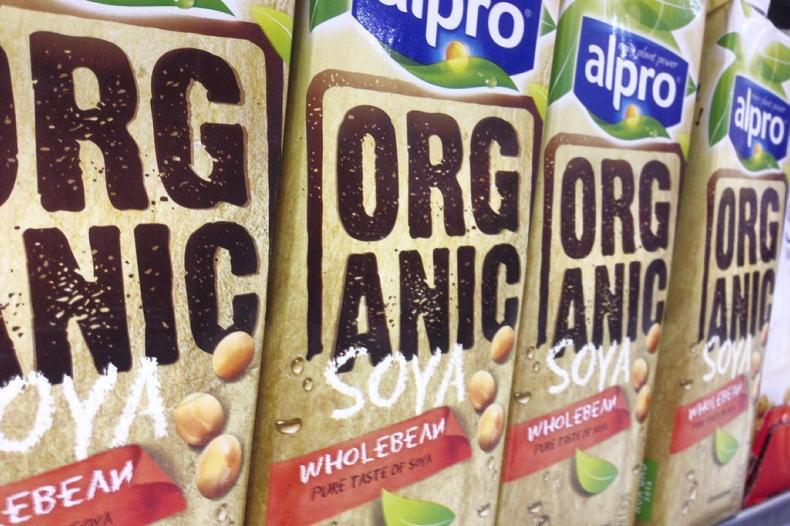

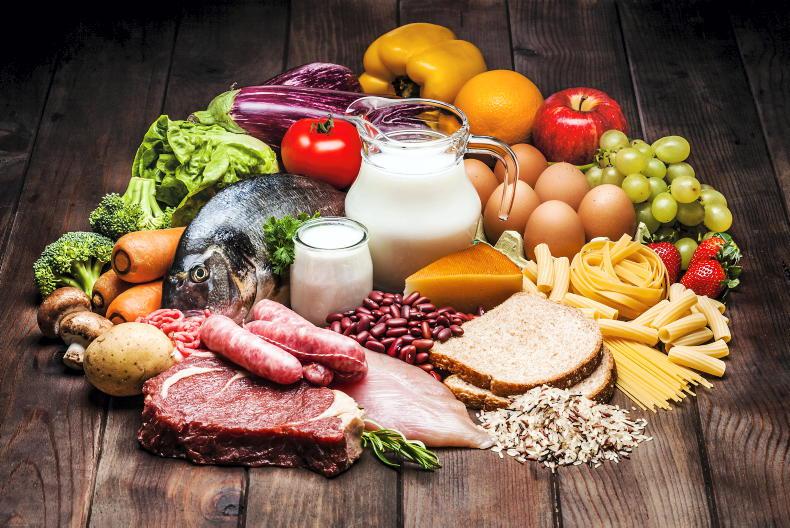


SHARING OPTIONS